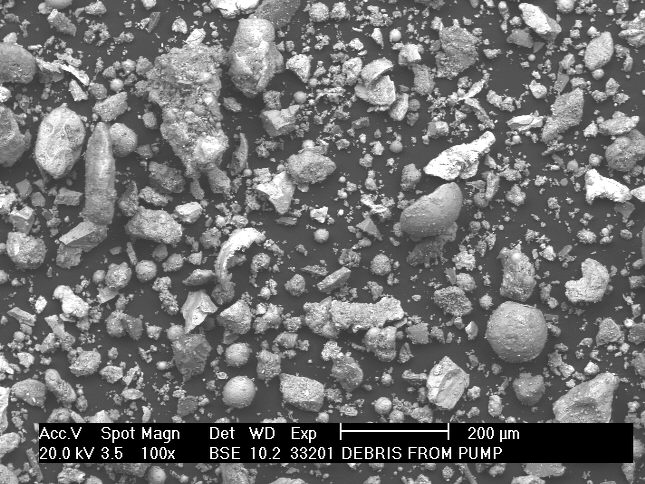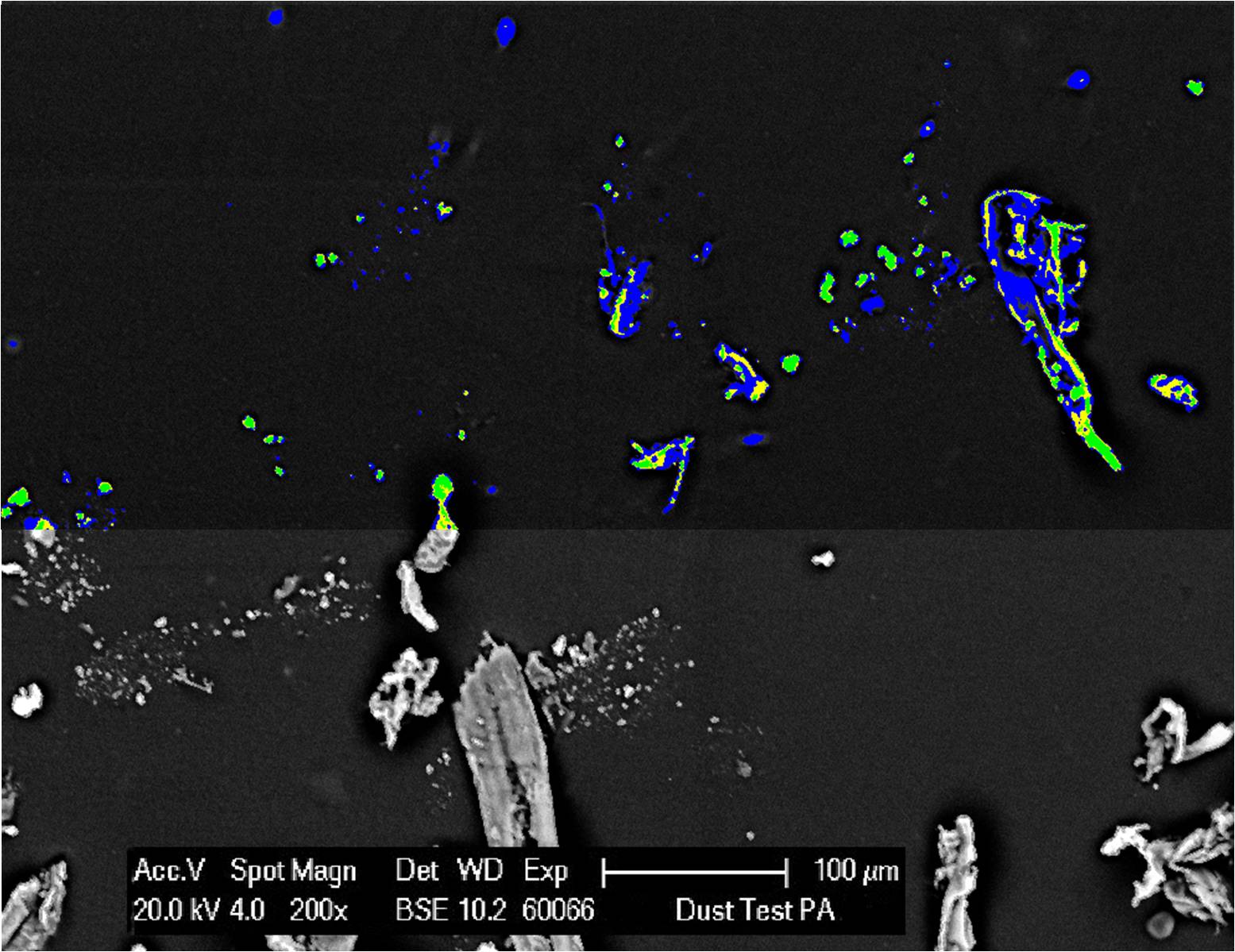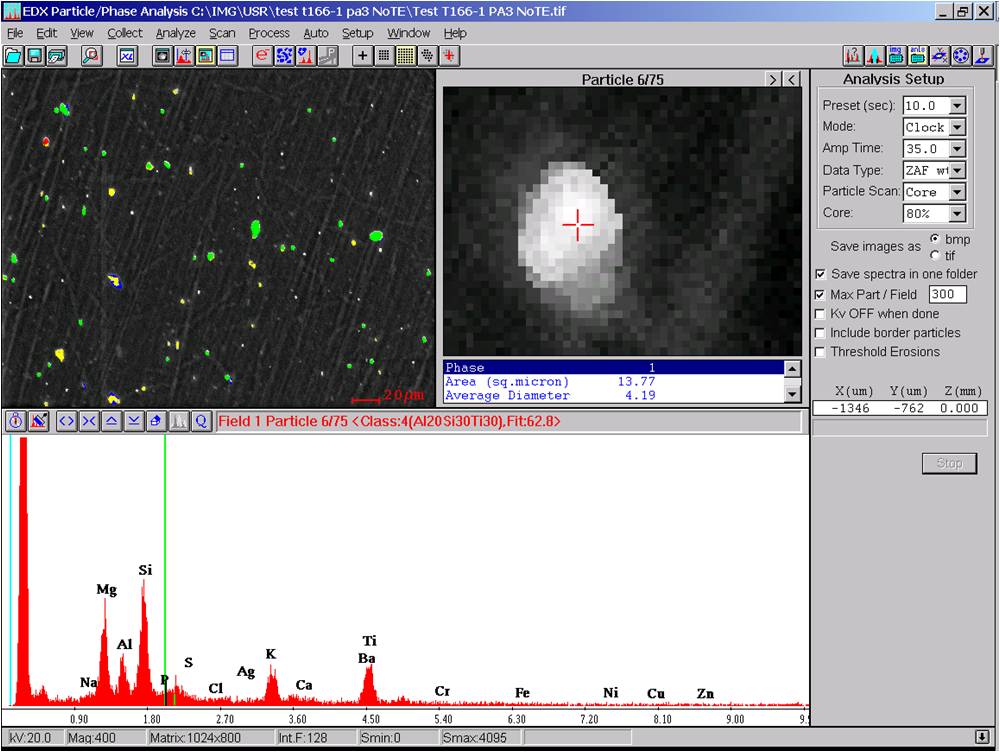SEM / EDX Automated Particle Characterisation and Analysis
 Particles can be automatically characterised physically and chemically by SEM / EDX using a unique Dedicated Particle Analysis system developed at LPD Lab Services.
Particles can be automatically characterised physically and chemically by SEM / EDX using a unique Dedicated Particle Analysis system developed at LPD Lab Services.
Particle and foreign body matter is present everywhere and most dusts are a complex mixture of particle types. Particles are generated in many enviroments, including manufacturing and production processes resulting in analysis being a common requirement, but often with very different focus:
- Operational Failure Investigation of Products: Debris in a water or oil pump splitting worn particles from the harder wear particles that caused the damage. Determining source of filter blinding blockage materials.
- Cleanroom Facilities have very low dust particle counts by careful and costly design, but identification of the sparsely collected particles is essential to avoid contaminated products and production issues.
- Office and Production Environments: Often driven by Health and Safety implications, particulates need to be assessed in terms of respirable threat, as well as potential chemical toxicity.
- Manufacturing: Diagnosing the source of particulates that build up at key process locations is essential in mitigating both contamination of product and in predicting failure of manufacturing equipment used along the production line.
- Research and Development: Analysis of particle production during operation of products is often a key requirement (e.g. automotive emissions, aero engineering components, engine wear, braking systems and even consumer products such as printers).
 LPD originally developed the automated SEM / EDX particle analysis system for characterising raw materials in magnet production, subsequently extending its application for pharmaceutical clients on respirable asthma drugs. Since then, it has been refined into a system that can analyse particles collected from a wide range of very different applications, across a range of substrates.
LPD originally developed the automated SEM / EDX particle analysis system for characterising raw materials in magnet production, subsequently extending its application for pharmaceutical clients on respirable asthma drugs. Since then, it has been refined into a system that can analyse particles collected from a wide range of very different applications, across a range of substrates.
Most particle analysis for investigation of unknown debris aims to use both physical and compositional information to determine the likely source(s) and appropriate methods for mitigation. Most dusts are a complex mix of particle types, so a key advantage of the automated system is that it can rapidly provide an optimised overview of the nature of the whole population, with significant counting statistics - allowing clearer definition of likely original component sources.
Dedicated Particle analysis uses a high resolution Backscatter detector image within the SEM to register particles automatically. The bespoke software then analyses each individual particle generating data including: -
- Coordinates
- Size, Shape and Orientation
- Chemical composition: Elemental X-ray spectrum stored for every particle.
 This allows a much more efficient use of analysis time than is possible by standard EDX mapping, generating exactly the sort of physical and elemental composition data necessary, far beyond that possible by optical microscopy inspection.
This allows a much more efficient use of analysis time than is possible by standard EDX mapping, generating exactly the sort of physical and elemental composition data necessary, far beyond that possible by optical microscopy inspection.
The Particle Analysis software can be programmed to register particles of different intensity from the BSE detector. 3 material phases are shown (green, yellow and blue) in the upper part of the above image overlaid, with the normal BSE image shown as the remainder in the lower portion.
An example screenshot from the running Particle Analysis software is shown here; the overall image of registered particles (top left window), with the particle being analysed shown as a thumbnail image (top right window) and the X-ray spectrum being acquired (lower window).
If you need more information on the technique or application, please contact Dr Simon Romani.

